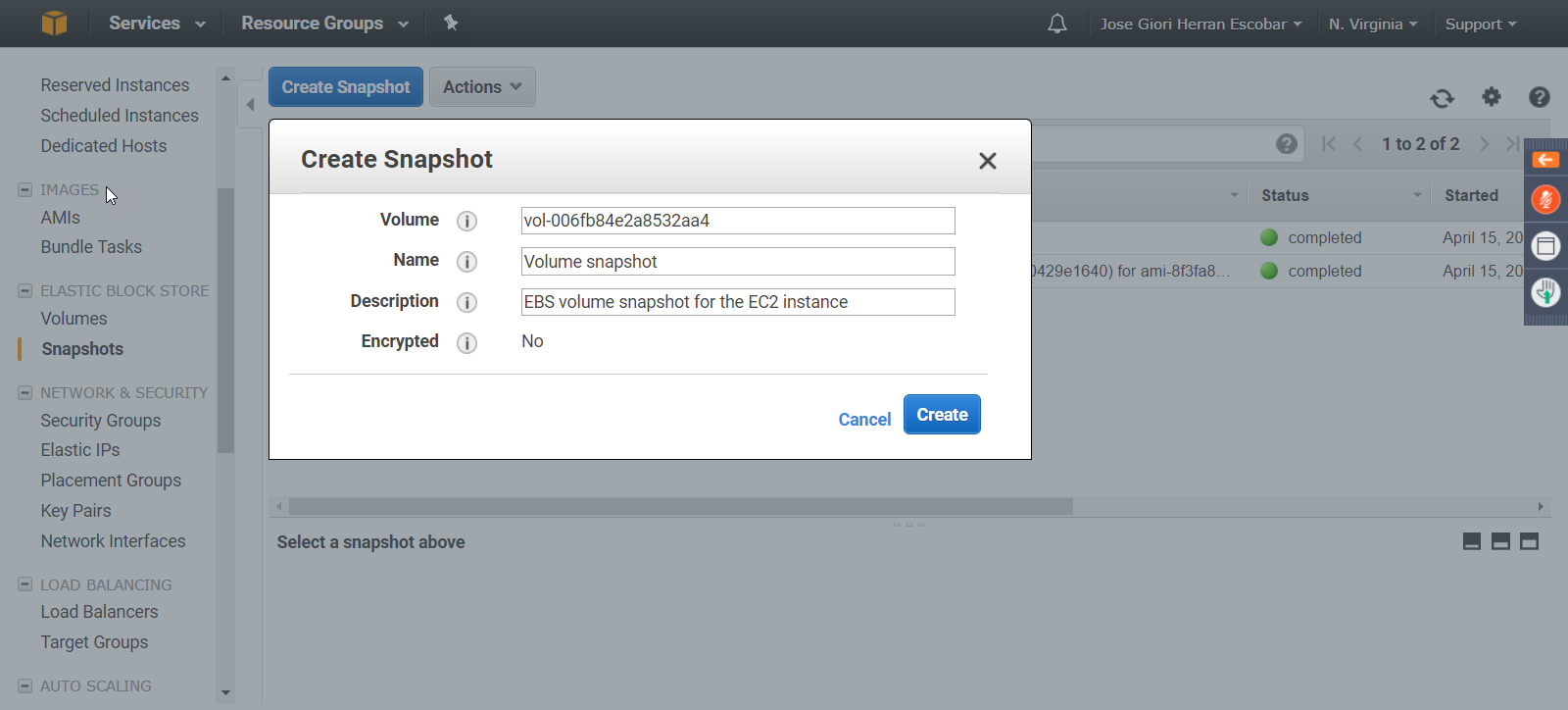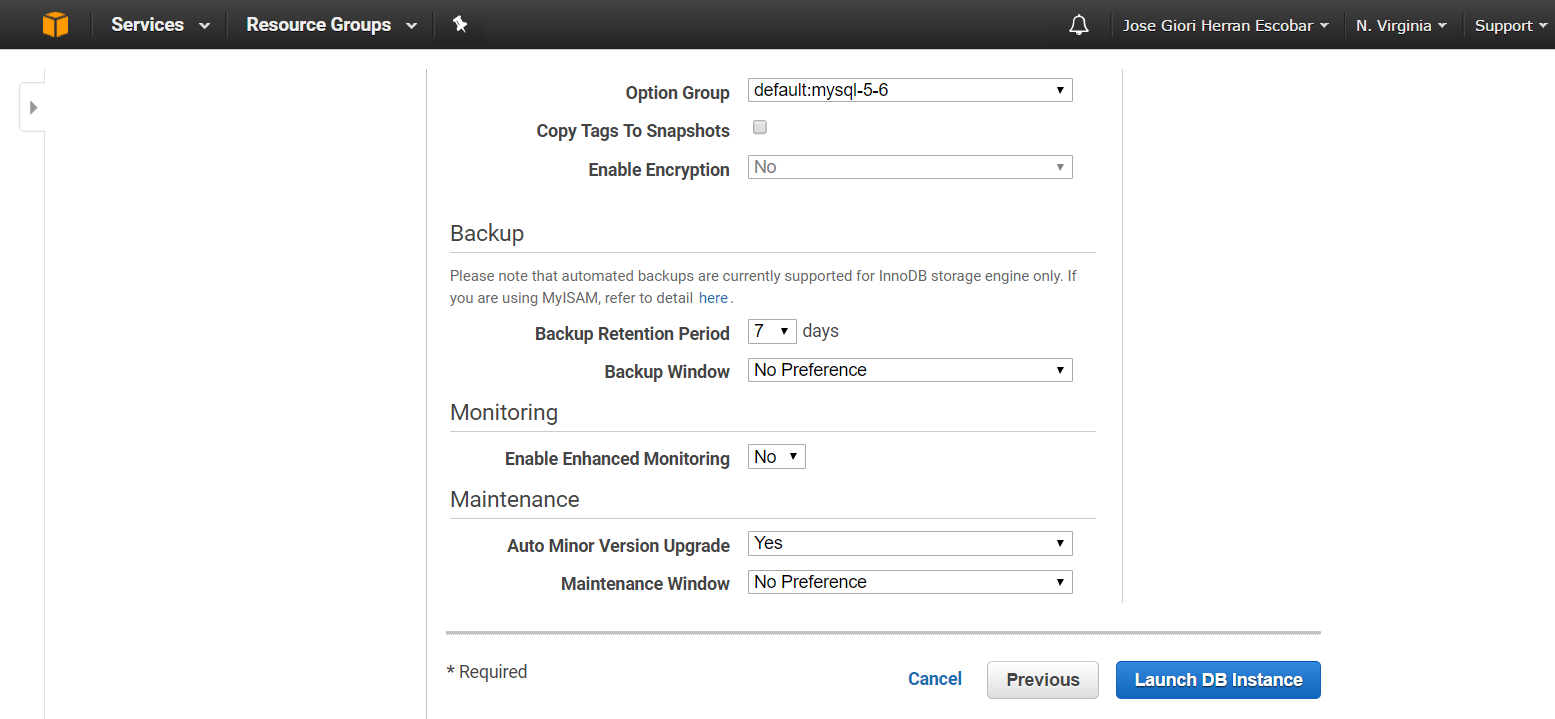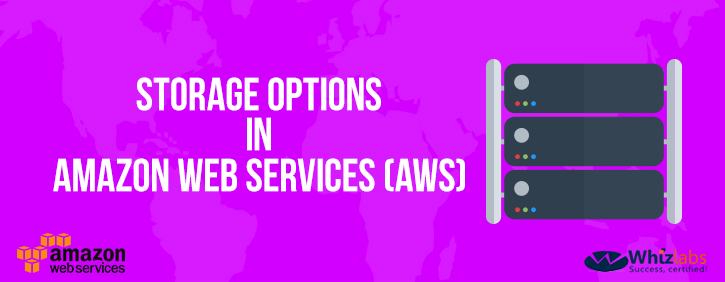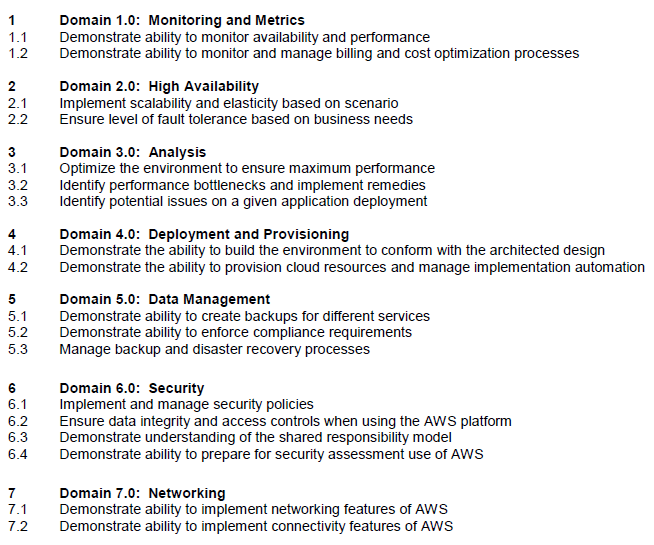Are you preparing for AWS Certified SysOps Administrator – Associate certification exam? Are you ready to pass this exam? In this blog, we are writing a series of articles on topics which are covered in the AWS Certified SysOps Associate certification exam. You can subscribe to us for receiving further updates on this topic.
The SysOps Associate certification exam is the hardest exam at the associate certification level. We would recommend you pass both solution architect associated certification exam and developer associated certification exam first before of taking this exam.
The AWS Certified SysOps Administrator – Associate exam validates technical expertise in deployment, management, and operations on the AWS platform
- TRY NOW : 10 Free Practice Questions for SysOps Associate Exam
- OFFER : 420 Practice Questions for SysOps Associate Exam (50% Discount)
The AWS Certified SysOps Administrator – Associate Level exam validates the candidate’s ability to:
- Deliver the stability and scalability needed by a business on AWS
- Provision systems, services and deployment automation on AWS
- Ensure data integrity and data security on AWS technology
- Provide guidance on AWS best practices
- Understand and monitor metrics on AWS
Figure #0. Domains covered by the AWS Certified SysOps associate exam
You can download the related AWS Certified SysOps Administrator – Associate Level Exam Blueprint for more detail about it.
In this article, we are going to explain about the topic that addresses the “demonstrate the ability to backups for different services” as highlighted in the AWS Blueprint from the above exam guide.
Context
Cloud storage is a critical component of cloud computing because it holds the information used by applications. Big data analytics, data warehouses, Internet of Things, databases, and backup and archive applications all rely on some form of data storage architecture.
Cloud storage is typically more reliable, scalable, and secure than traditional on-premises storage systems. AWS offers a complete range of cloud storage services to support both application and archival compliance requirements.
Amazon Web Services (AWS) storage solutions are designed to deliver secure, scalable, and durable storage for businesses looking to achieve efficiency and scalability within their backup and recovery environments, without the need for an on-premises infrastructure.
Amazon Web Services (AWS) provides low-cost data storage with high durability and availability. AWS offers storage choices for backup, archiving, and disaster recovery use cases and provides a block, file, and object storage.
AWS Storage options
Amazon Web Services offers several AWS Cloud storage services and features like following:
|
AWS Service |
Brief Description |
|
Amazon Simple Storage Service
|
A service that provides scalable and highly durable object storage in the cloud.Amazon Simple Storage Service (Amazon S3) is object storage with a simple web service interface to store and retrieve any amount of data from anywhere on the web. It is designed to deliver 99.999999999% durability, and scale past trillions of objects worldwide.Customers use S3 as primary storage for cloud-native applications; as a bulk repository, or “data lake,” for analytics; as a target for backup & recovery and disaster recovery; and with serverless computing. |
|
Amazon Glacier |
A service that provides low-cost highly durable archive storage in the cloud.Amazon Glacier is a secure, durable, and extremely low-cost cloud storage service for data archiving and long-term backup. Customers can reliably store large or tiny amounts of data for as little as $0.004 per gigabyte per month, significant savings compared to on-premises solutions. |
|
Amazon Elastic File System
|
A service that provides scalable network file storage for Amazon EC2 instances.Amazon Elastic File System (Amazon EFS) provides simple, scalable file storage for use with Amazon EC2 instances in the AWS Cloud. Amazon EFS is easy to use and offers a simple interface that allows you to create and configure file systems quickly and easily.Amazon EFS is designed for high availability and durability and provides performance for a broad spectrum of use cases, including web and content serving, enterprise applications, media processing workflows, container storage and Big Data and analytics applications. |
|
Amazon Elastic Block Store
|
A service that provides block storage volumes for Amazon EC2 instances.Amazon Elastic Block Store (Amazon EBS) provides persistent block storage volumes for use with Amazon EC2 instances in the AWS Cloud. Each Amazon EBS volume is automatically replicated within its Availability Zone to protect you from component failure, offering high availability and durability. Amazon EBS volumes offer the consistent and low-latency performance needed to run your workloads. |
|
Amazon EC2 Instance Storage |
Temporary block storage volumes for Amazon EC2 instances. |
|
AWS Storage Gateway |
An on-premises storage appliance that integrates with cloud storage. |
|
AWS Snowball |
A service that transports large amounts of data to and from the cloud. |
|
Amazon CloudFront |
A service that provides a global content delivery network (CDN). |
Table #1. AWS Cloud Storage options
Independent of the AWS Cloud storage that you choose, you must automate your administrative tasks related to backup and restore your data, guarantying its availability.
As with any environments, the best practice is to have a backup and to put in place safeguards against malicious or accidental users’ errors. Please review the following best practices related to some AWS services described before:
Amazon S3
Using AWS S3 as backup
Amazon S3 is often used as a highly durable, scalable, and secure solution for backup and archiving of critical data. You can easily move cold data to Amazon Glacier using lifecycle management rules on data stored in Amazon S3. You can also use Amazon S3 cross-region replication to automatically copy objects across S3 buckets in different AWS Regions asynchronously, providing disaster recovery solutions for business continuity.
Once data is stored in S3, it can be automatically tiered into lower cost, longer-term cloud storage classes like S3 Standard – Infrequent Access and Amazon Glacier for archiving. S3 Standard – IA is ideal for data that is accessed less frequently, but requires rapid access when needed. Standard – IA is ideally suited for long-term file storage, older data from sync and share, backup data, and disaster recovery files.
For S3 data, that best practice includes secure access permissions, Cross-Region Replication, versioning and a functioning, regularly tested backup.
Amazon Glacier
Amazon S3 enables you to utilize Amazon Glacier’s extremely low-cost storage service as storage for data archival. Amazon Glacier is an extremely low-cost storage service that provides secure, durable, and flexible storage for data backup and archival.
Standard retrievals allow you to access any of your archives within several hours. Standard retrievals typically complete within 3 – 5 hours.
Amazon EBS
Creating EBS snapshots
You can backup the data on your EBS volumes to Amazon S3 by taking point-in-time snapshots. Snapshots are incremental backups, which means that only the blocks on the device that have changed after your most recent snapshot are saved. This minimizes the time required to create the snapshot and saves on storage costs. When you delete a snapshot, only the data unique to that snapshot is removed. Active snapshots contain all the information needed to restore your data to a new EBS volume.

Figure #1. Creating an EBS snapshot
To create a snapshot for EBS volumes that serve as root devices, you should stop the instance before taking the snapshot.
Snapshots that are taken from encrypted volumes are automatically encrypted. Volumes that are created from encrypted snapshots are also automatically encrypted. All EBS snapshot can be managed by CLI.
There are other ways to storage data into AWS, one of them is saving data into a database or database service. Amazon AWS offers a database managed solution called RDS (Amazon Relational Database Service), where the information availability is very relevant.
Amazon RDS
RDS Automatic Backup
Amazon RDS creates and saves automated backups of your DB instance. Amazon RDS creates a storage volume snapshot of your DB instance, backing up the entire DB instance and not just individual databases.
Amazon RDS creates automated backups of your DB instance during the backup window of your DB instance.

Figure #2. Automated backup into an RDS instance
Amazon RDS saves the automated backups of your DB instance according to the backup retention period that you specify. By default, the backup retention period is 7 days.
If necessary, you can recover your database to any point in time during the backup retention period.
Creating a DB snapshot
Amazon RDS creates a storage volume snapshot of your DB instance, backing up the entire DB instance and not just individual databases. Creating this DB snapshot on a Single-AZ DB instance results in a brief I/O suspension that can last from a few seconds to a few minutes, depending on the size and class of your DB instance. Multi-AZ DB instances are not affected by this I/O suspension since the backup is taken on the standby.

Figure #3. Creating a DB Snapshot
When you create a DB Snapshot, you need to identify which DB instance you are going to back up, and then give your DB snapshot a name so you can restore from it later. If you have IAM database authentication enabled, then this setting is inherited from the source DB instance.
RDS High Availability (Multi-AZ)
Amazon RDS provides high availability and failover support for DB instances using Multi-AZ deployments. Amazon RDS uses several different technologies to provide failover support. Multi-AZ deployments for Oracle, PostgreSQL, MySQL, and MariaDB DB instances use Amazon’s failover technology. SQL Server DB instances use SQL Server Mirroring. Amazon Aurora instances stores copies of the data in a DB cluster across multiple Availability Zones in a single region, regardless of whether the instances in the DB cluster span multiple Availability Zones
In a Multi-AZ deployment, Amazon RDS automatically provisions and maintains a synchronous standby replica in a different Availability Zone. The primary DB instance is synchronously replicated across Availability Zones to a standby replica to provide data redundancy, eliminate I/O freezes, and minimize latency spikes during system backups. Running a DB instance with high availability can enhance availability during planned system maintenance, and help protect your databases against DB instance failure and Availability Zone disruption.
Important Points to Remember for the AWS Certified SysOps Administrator – Associate Certification exam
- AWS provides low-cost data storage with high durability and availability
- Amazon S3 is often used as a highly durable, scalable, and secure solution for backup and archiving of critical data
- Amazon Glacier is a secure, durable, and extremely low-cost cloud storage service for data archiving and long-term backup. Amazon Glacier is optimized for infrequently accessed data, where a retrieval time of several hours is suitable.
- You can use Standard retrievals to restore backup data, retrieve archived media content for same-day editing or distribution
- You can backup the data on your EBS volumes to Amazon S3 by taking point-in-time snapshots. Snapshots are incremental backups.
- Amazon RDS creates a storage volume snapshot of your DB instance, backing up the entire DB instance
- Amazon RDS saves the automated backups of your DB instance according to the backup retention period that you specify
- SQL Server DB instances use SQL Server Mirroring
Glossary
| Term | Brief description |
| DB snapshot | A user-initiated point backup of a DB instance. |
| EBS snapshot | A backup of your volumes that is stored in Amazon S3. You can use these snapshots as the starting point for new Amazon EBS volumes or protect your data for long-term durability. |
Summary
In this article, we have explained about different AWS cloud storage solutions and backup and recovery processes related to them, sharing best practices and usages to improve the availability of your enterprise data.
References:
[1] Amazon Backup and Recovery. Amazon AWS. https://aws.amazon.com/backup-recovery/
[2] Amazon AWS Storage Services Overview. Amazon AWS.https://d0.awsstatic.com/whitepapers/Storage/AWS%20Storage%20Services%20Whitepaper-v9.pdf
[3] Amazon Backup, Archive, and Restore Approaches Using AWS. Amazon AWS.https://d0.awsstatic.com/whitepapers/Backup_Archive_and_Restore_Approaches_Using_AWS.pdf
[4] AWS FAQs. Amazon AWS. https://aws.amazon.com/faqs/
[5] AWS Certified SysOps Administrator – Associate Certification.https://aws.amazon.com/certification/certified-sysops-admin-associate/
[6] AWS Glossary. Amazon AWS. http://docs.aws.amazon.com/general/latest/gr/glos-chap.html
- Top 20 Questions To Prepare For Certified Kubernetes Administrator Exam - August 16, 2024
- 10 AWS Services to Master for the AWS Developer Associate Exam - August 14, 2024
- Exam Tips for AWS Machine Learning Specialty Certification - August 7, 2024
- Best 15+ AWS Developer Associate hands-on labs in 2024 - July 24, 2024
- Containers vs Virtual Machines: Differences You Should Know - June 24, 2024
- Databricks Launched World’s Most Capable Large Language Model (LLM) - April 26, 2024
- What are the storage options available in Microsoft Azure? - March 14, 2024
- User’s Guide to Getting Started with Google Kubernetes Engine - March 1, 2024


